Singapore has a hell-themed park that's full of life-sized dioramas of demons and tortured sinners. I spent a day there and it's one of my favorite day trips.
Marielle Descalsota

- Haw Par Villa is a park in Singapore known for its themes of hell, the afterlife, and mythology.
- The park has over 1,000 statues and 150 life-sized dioramas, many of which are inspired by Chinese folklore and legends.
This is Haw Par Villa, Singapore's most infamous cultural park.
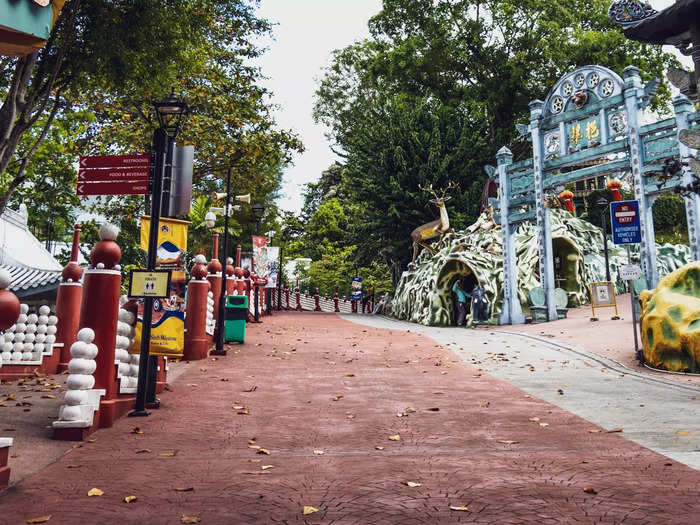
The 3,800-square-meter (around 40,900 square feet) park is known for its themes of hell, the afterlife, and mythology. It's one of Singapore's strangest cultural attractions.
The park was constructed in 1937 by Chinese-Burmese entrepreneur Aw Boon Haw, who also founded the topical ointment Tiger Balm, according to government microsite Singapore Infopedia. The park is dedicated to his brother, Aw Boon Par.
While the brothers no longer have ties to the park, with the family having donated it to the Singapore Tourism Board, a Tiger Balm representative told Insider that it remains "part of our heritage story."
"Regardless, the Aw Brothers – Aw Boon Haw (the gentle tiger) and Aw Boon Par (the gentle leopard) who created Tiger Balm in the 1900s will always be a part of our heritage story," the representative added.
The Singapore Tourism Board did not reply to my request for comment on Haw Par Villa.
There are more than 1,000 statues and 150 life-sized dioramas in the park, many of which are inspired by Chinese folklore and legends.
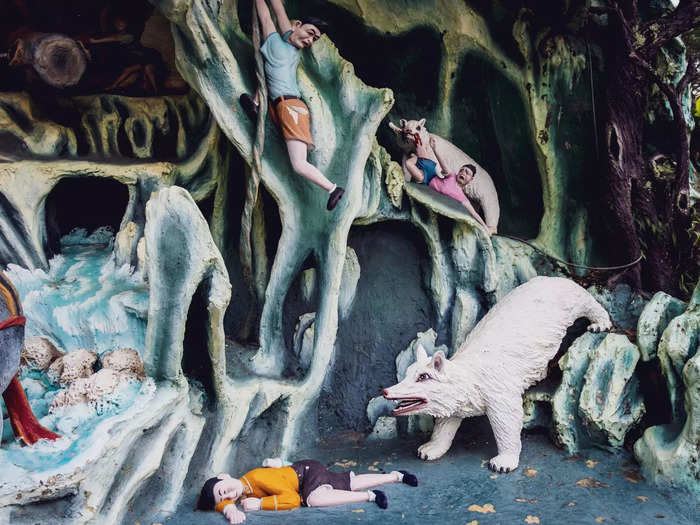
Many of the park's colorful dioramas were designed to mimic scenes from Chinese literary classics, like the 16-century novel "Journey to the West."
While some of the statues depict benign figures like laughing Buddhas, many others are gruesome. Violent scenes are commonplace — one sculpture (pictured above) shows young boys being eaten alive by beasts.
Within the local community, many have said that the park is haunted, or at the very least, "creepy as hell."
The museum claims it is the "world's first museum exploring death and the afterlife," making it one of Singapore's most popular dark tourism attractions.
One recent weekday afternoon, I took a journey into Singapore's theme park from hell.
The park's infamous "Hell's Museum" features depictions of what happens in the 10 Courts of Hell.
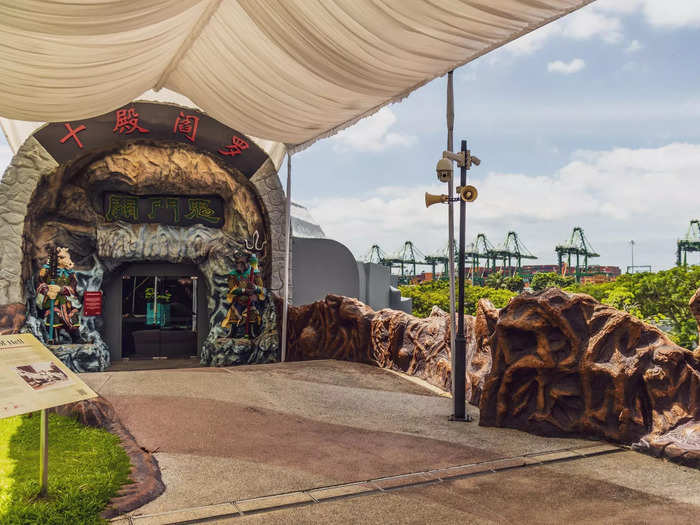
The hell-themed museum is air-conditioned, making it a welcomed relief from Singapore's sweltering heat. It overlooks the PSA Singapore Multipurpose Terminal (pictured above), a commercial port terminal that facilitates some of the country's trade.
The entrance to "hell" is elaborate, with a shade to shelter visitors from the sun and figures embedded around the doors.
In the 10 Courts of Hell, people are punished for a multitude of sins.
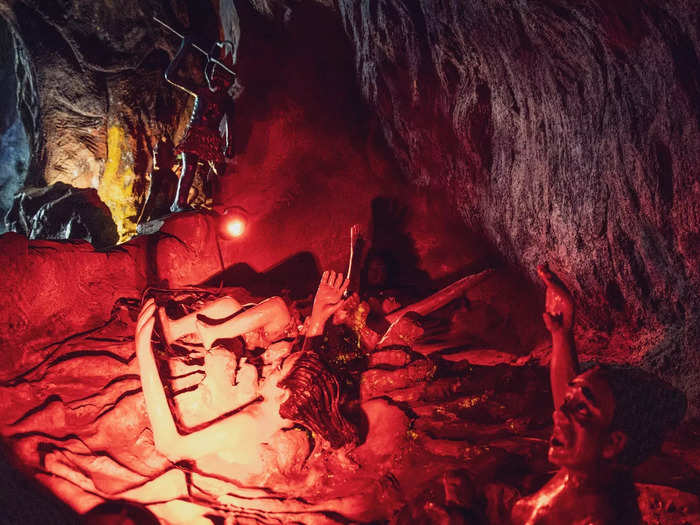
The museum features scenes based on Taoist and Buddhist beliefs of how people would be punished in the afterlife.
In Chinese mythology, people have to go through "courts" in the afterlife. The dead are sentenced by a king, who condemns them to their specific type of punishment.
There are 10 kings who preside over the courts, and they were first named in a Chinese script in the eighth or ninth century, according to a plaque in the museum.
Only when sinners have completed all ten steps of judgement can they be reincarnated.
In the second court, those who practice prostitution are thrown into a "pool of blood" that's overseen by a demon holding a pitchfork (pictured above).
The sculptures are at once violent and kitschy — and often human-sized.
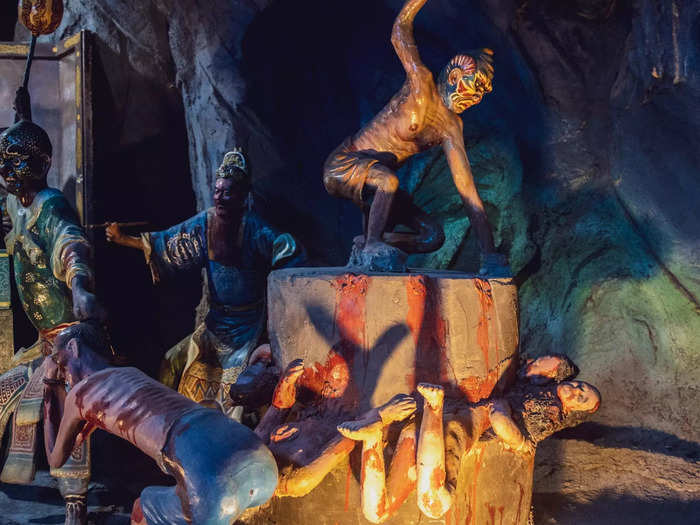
Sinners can be brutally punished for seemingly trivial things like cursing, wasting food, and "misusing books."
Here, the fourth court grounds sinners in a large stone for a "lack of filial piety." Filial piety — the act of being faithful to one's parents — is one of the top values in Chinese philosophy.
One of the most brutal scenes is shown in court nine, where a person's head is chopped off for any of these transgressions: robbery, murder, and rape.
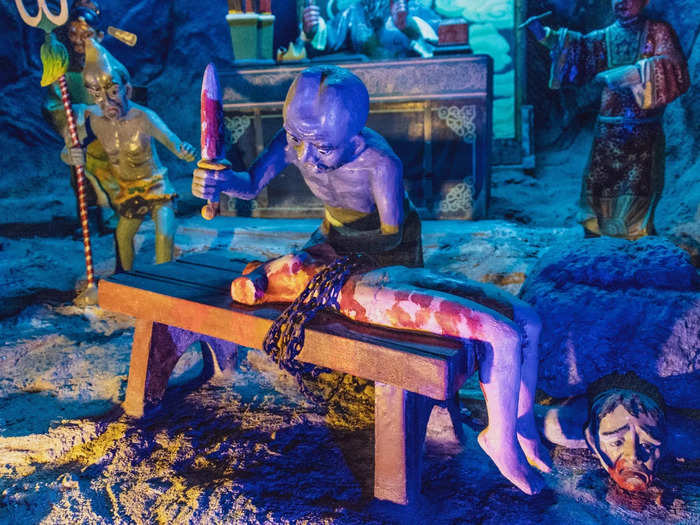
Chinese mythology has drawn up multiple ways for a sinner to be punished for abhorrent crimes. Rape, for example, is punished in several courts.
The courts act as both a judiciary, where sinners are tried for their crimes, and a penal system, where sinners are punished, according to a plaque in the museum.
The museum was a strange mix of seemingly inconsequential wrongdoings and serious crimes, all of which are punished in vicious fashion.
At one point in my tour of the museum, I turned to a group of friends who were also exploring the courts of hell. I asked them what they made of it. One of the women, an experience consultant named Tracy, just shrugged.
"I honestly don't believe in it too much," she said. "Rather, I can see how it all links with the heritage of the park."
I ventured into the park once more that night to check out some of the most bizarre dioramas, including a chicken-headed prostitute luring a man into a cave.
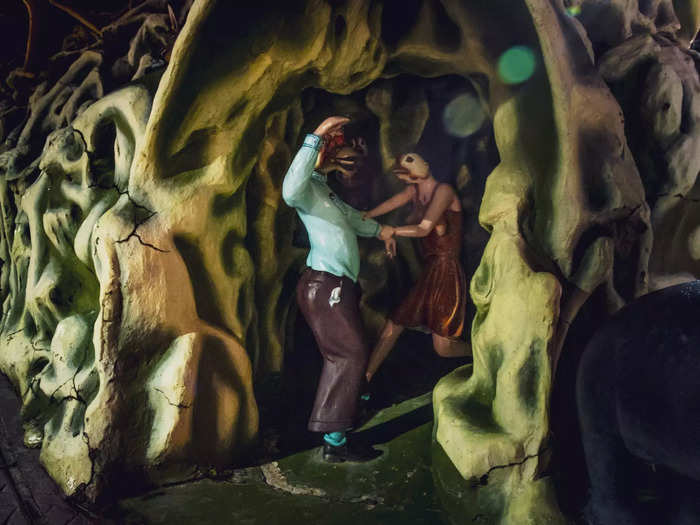
The park is open until 8 p.m. every day except Friday and Saturday, when it closes at 10 p.m.
Exploring the park after dark was a weird and wonderful experience — the half-human, half-animal statues hiding in the caves seem much spookier at night. But it was strangely peaceful too, without anyone else around.
The chicken-headed prostitute diorama was big: Both figures were a head taller than me.
The sprawling park, which is built on a hill in southern Singapore, has caves that descend below the life-sized dioramas.
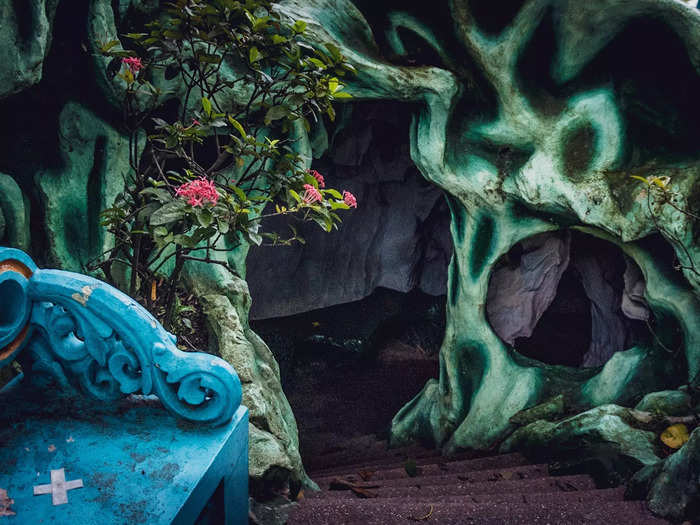
The man-made caves were painted in a gradient of green. Steep steps led me into a dark and dingy cavern, where my steps echoed, making me feel like I was in a Hadean fairytale.
But a gnarly sight awaits inside the caves — this one was full of sculptures of deformed dogs.
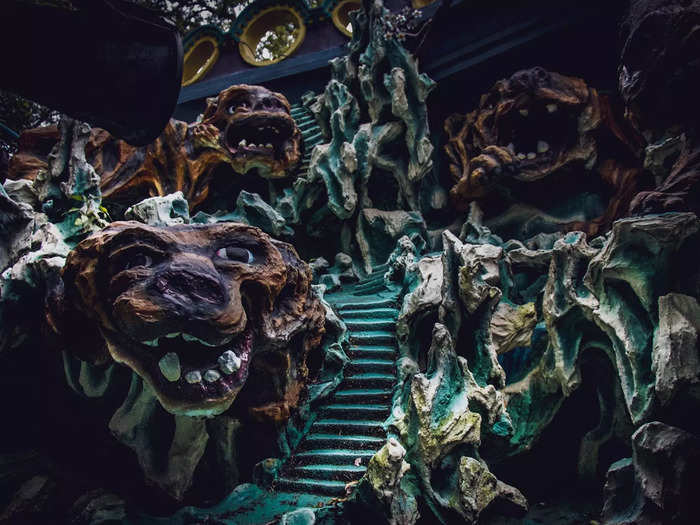
The rest of the cave was bare. After snapping a few photos, I ran back up the steps. I know it's all fake and just for show — but I still did not want to be in there alone.
Although the park was a visual overload, it still remains one of the most fascinating sites I've ever been to.
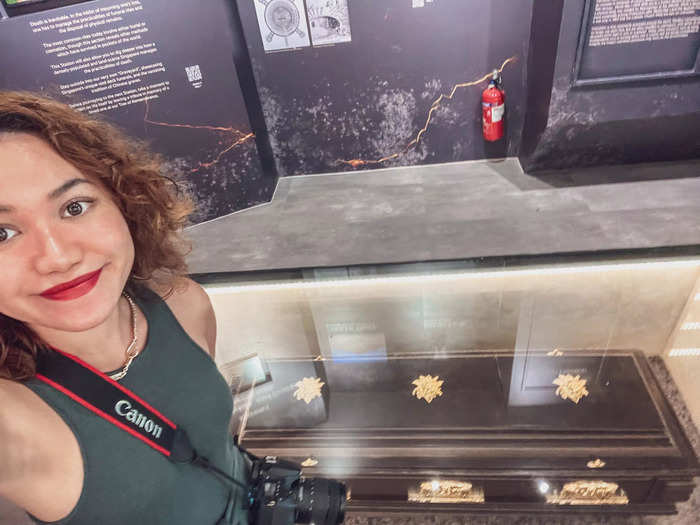
The park is a weird and wonderful world. I've lived in Singapore for over 20 years, and the park is one of my favorite spots for a day trip.
It's also unlike anything else in Singapore, so I would recommend it to anyone visiting Singapore — or anyone looking for a new adventure in an otherwise glistening, modernized city.
READ MORE ARTICLES ON
Popular Right Now
Popular Keywords
Advertisement